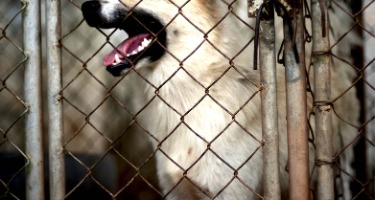THE INCIDENCE OF dog attacks in the United States rises every year. Each day, 1,000 Americans require emergency care for serious injuries from dog bites; annually about 14,000 people are hospitalized as a result of them. With these injuries, naturally, come claims for compensation by the victims against dog owners.
Every state has its own laws that cover suing a dog owner after an attack. Some impose strict liability on the owner, while others rely on common-law negligence theories. Some prohibit claims made by property trespassers; others limit compensation if the evidence shows the dog was provoked into the attack.
Assuming a legal basis exists for filing a personal injury claim, the primary issue is usually the value of the claim. An experienced lawyer can evaluate the particulars and determine a fair settlement range. Numerous factors will affect this, of course. Some of the principal ones:
The severity of the injury or disfigurement. Dog attacks can cause broken bones, nerve damage and other serious physical harm. Someone knocked over by a dog might well suffer major orthopedic injuries that require surgery.
The size and location of any scars or disfigurement. Bites on the face and arms generally lead to higher compensation, as they’re more conspicuous, especially on women and children. Some scars never fully heal, becoming permanent disfigurements that cannot be repaired even via plastic surgery.
Mental anguish and psychological trauma from the attack. This can include post-traumatic stress disorder (PTSD). Many victims must begin seeing a counselor or therapist due to a new fear of dogs, from regularly reliving the attack or from a pervasive sense of anxiety and humiliation.
The type of medical treatment received for the injuries and future treatment that will be needed. If a victim required plastic surgery or will need it in the future, this will likely increase the settlement amount. In addition, many victims must undergo a series of rabies shots, which is quite painful, in addition to scar revisions.
The amount of hospital costs, medical bills and other expenses related to the attack. If plastic surgery or scar revision will be needed down the road, a cost projection by a board-certified plastic surgeon is strong evidence to support these damage claims.
The amount of wages lost because of necessary work absence. Many victims—postal workers and food delivery personnel, for example—are attacked while doing their job and will receive workers’ compensation for time lost. In such cases, the workers’-comp insurer will demand repayment of these wages, but they can be claimed in the case against the dog owner.
The effects that the injuries from the attack have had on the victim’s life. An inability to engage in many common activities and pleasures as before the attack, for instance: going for a walk or jog through the neighborhood, say, or even riding a bike on public streets or in a park.
The amount of the insurance policy limits available from a dog owner’s insurance policy. These are usually a business or homeowner’s insurance policy, and their limits vary greatly. They are a major factor in determining the amount of the settlement.
In addition to the eight factors above, the circumstances of the bite are important when determining compensation. For example, if the dog owner alleges that a child pulled the dog’s tail and thereby provoked the attack, it could (assuming it’s supported by evidence) reduce the award. Likewise, a person who was attempting to break up a fight between two dogs might get less compensation, depending on the particulars.
Where an attack happened can also be a crucial factor. Some counties, especially rural ones, are home to more conservative populations, and such juries’ settlement amounts will often be lower than in bigger, more urban areas. Surveying settlements and jury verdicts in a variety of specific cities and counties can be helpful.
To maximize a settlement amount, an experienced attorney will often have the victim evaluated by a plastic surgeon, who will personally examine the victim, take measurements and photographs and recommend a plan for scar revision.
For younger children, surgery might not be an option until they reach adolescence. If so, a young victim will be forced to live with scars or other disfigurement for years—and will likely be self-conscious about his or her appearance as well as subject to bullying and teasing by classmates. This can take a significant psychological and emotional toll on a young child.
In addition, a lawyer may have the client evaluated by a psychologist or other mental-health specialist. A victim might withhold feelings and emotions from family members and friends, for example, yet be more open with a professional—who can then write a report detailing the impact of the attack on the victim, the need for counseling and the psychological prognosis.
Ultimately, it’s often the skill and experience of a dog-bite lawyer that determines the settlement amount. Attorneys with a strong track record of successful settlements know how best to negotiate these claims with insurance adjusters to maximize it. Should a case require litigation, of course, the victim will want an attorney with strong experience in the courtroom.
LAWRENCE J. BUCKFIRE is a trial attorney in Southfield, Michigan. His law firm specializes in personal injury and medical negligence cases.






























